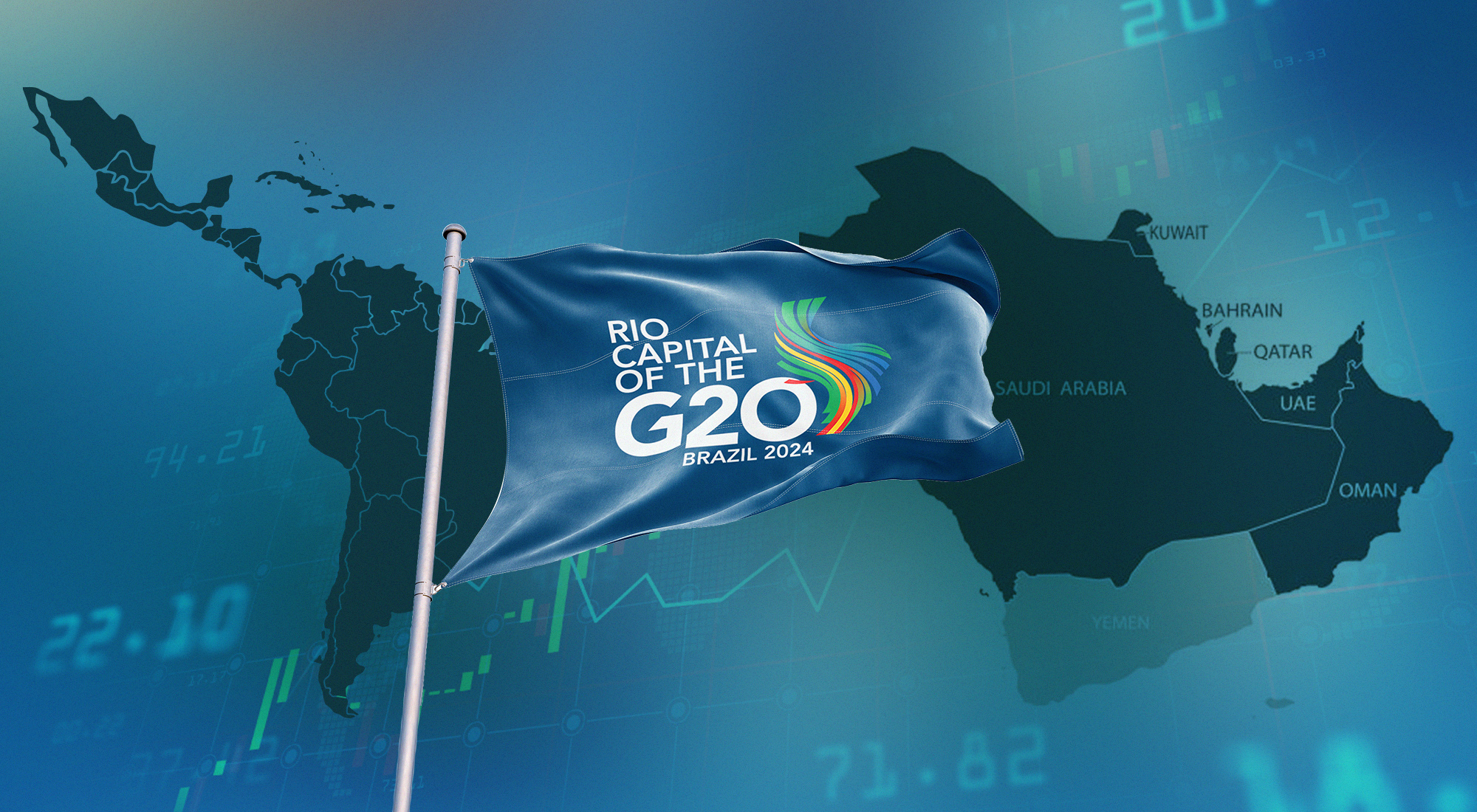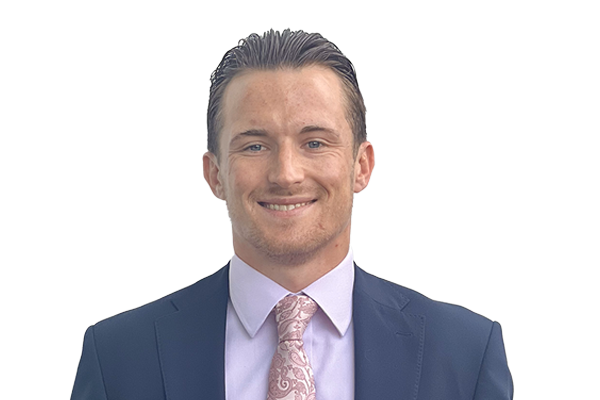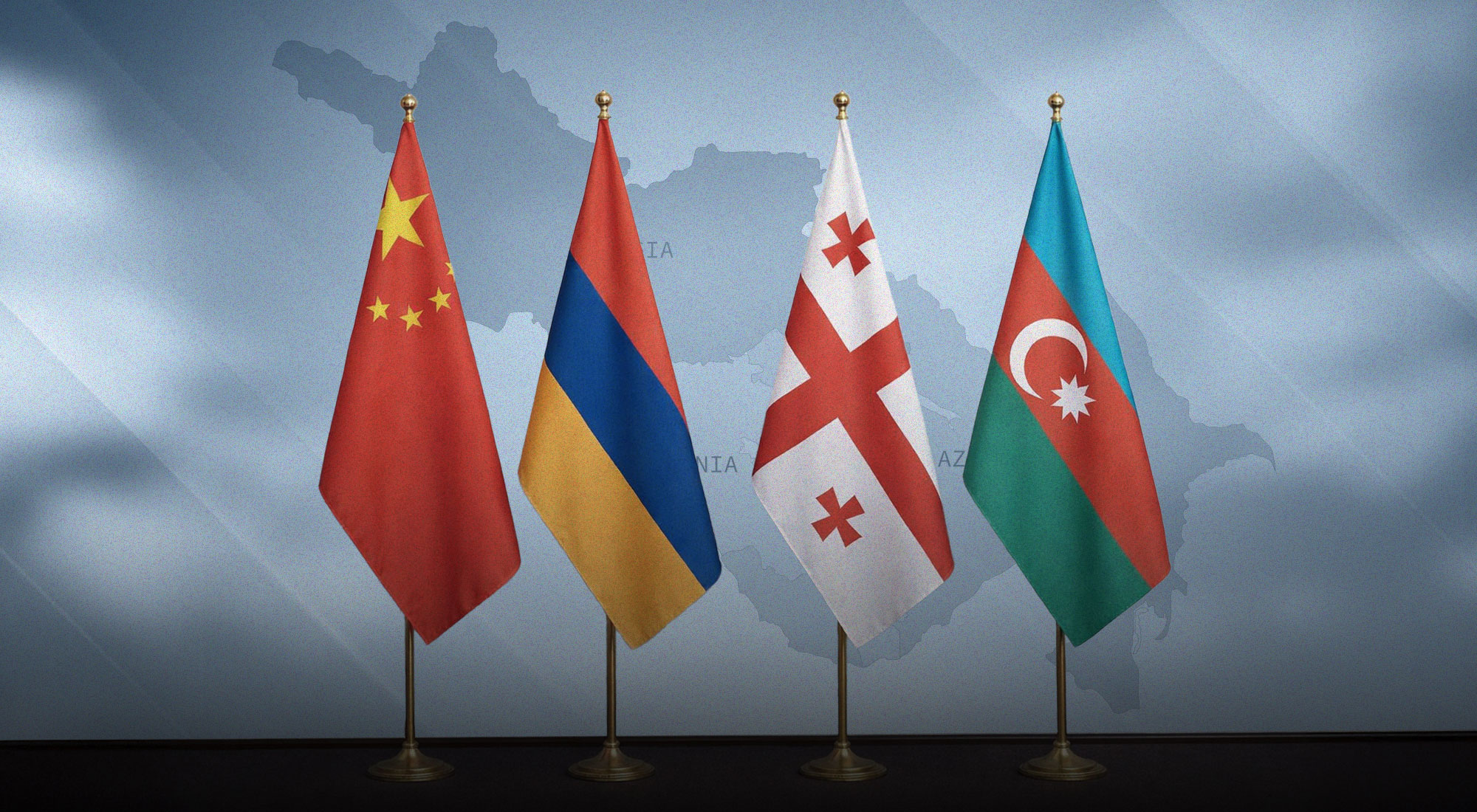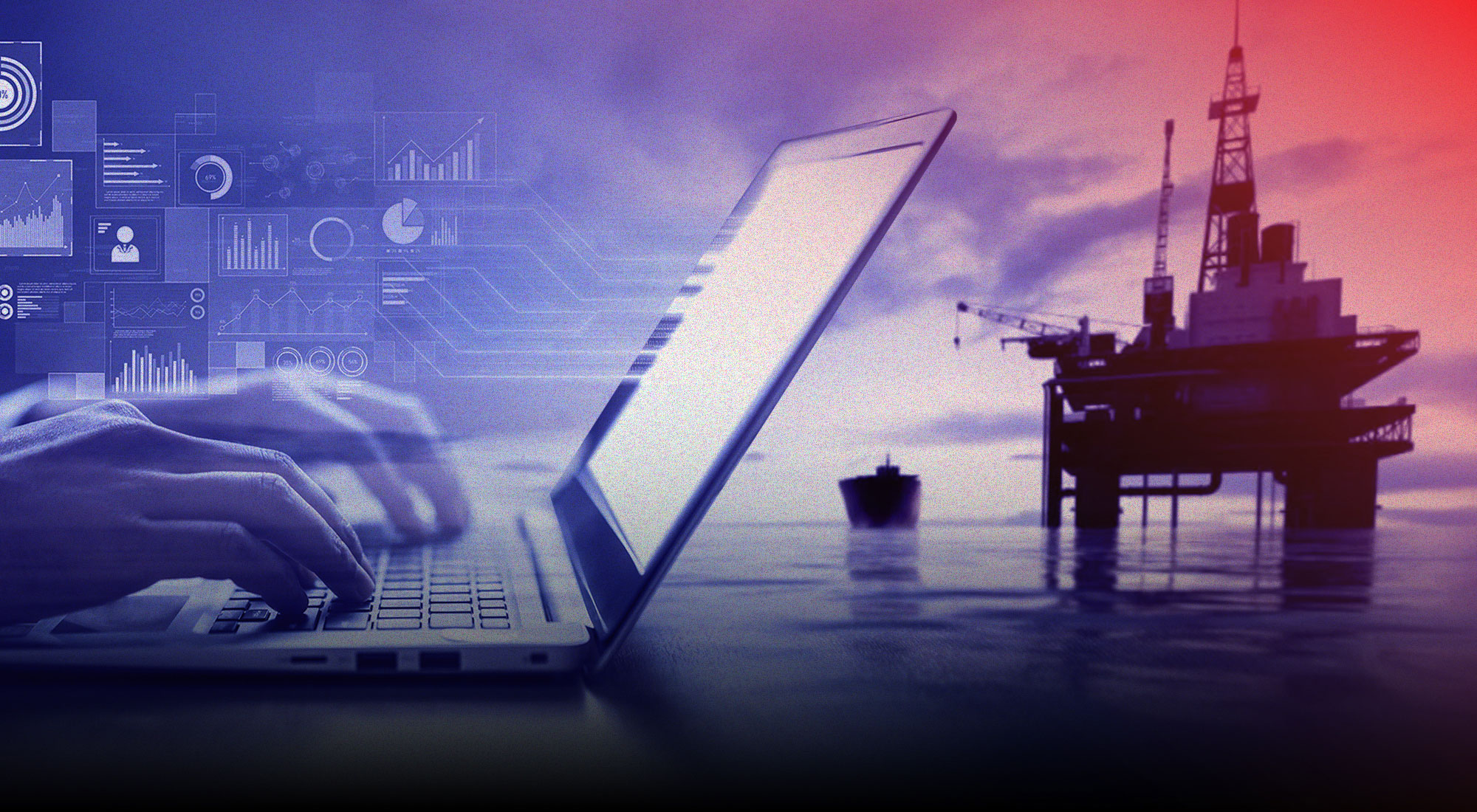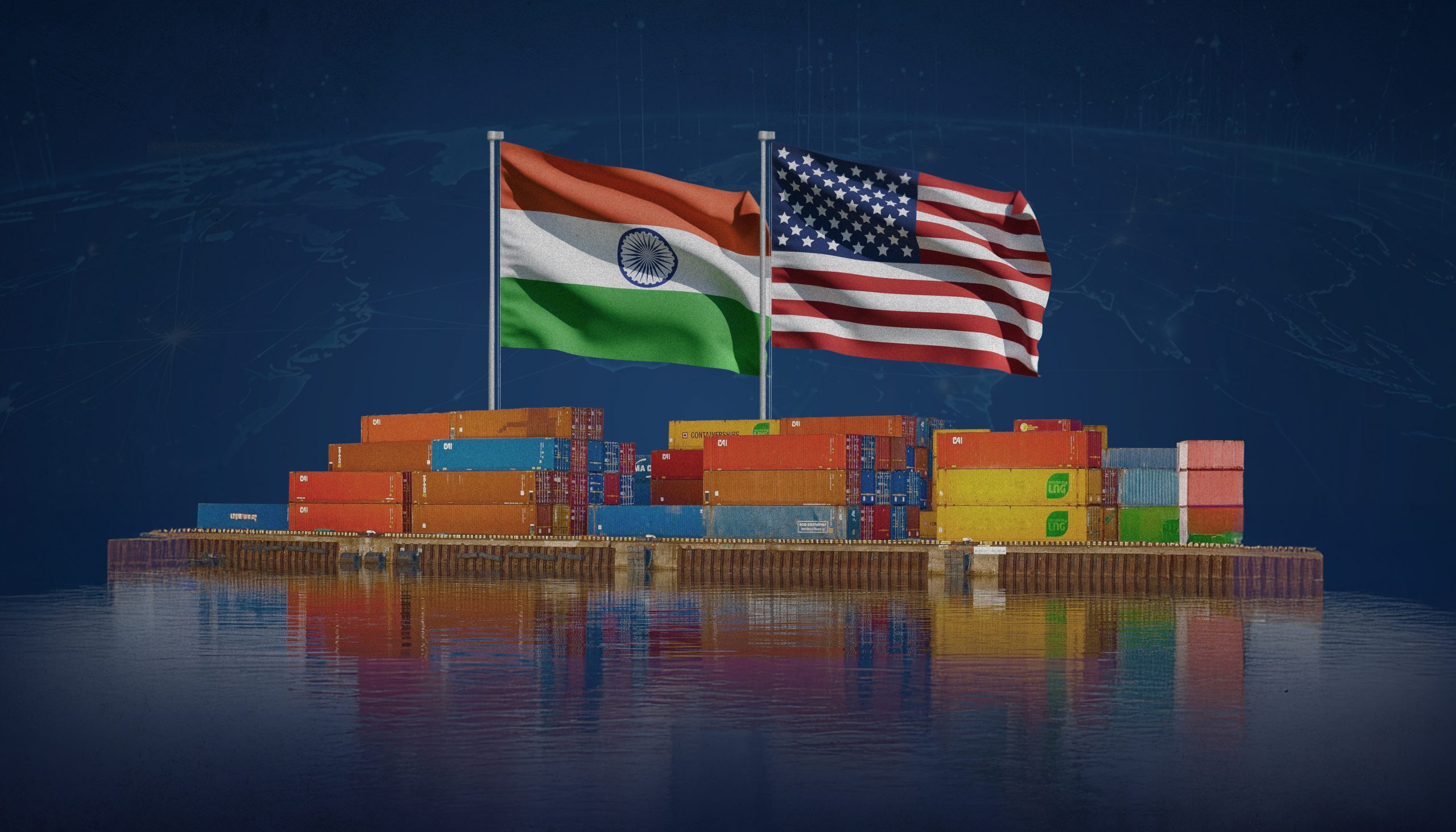Saudi Arabian and Emirati representatives will be attending the Rio G20 Summit in November (while Saudi Arabia is a full G20 member, the UAE has become a repeat guest member of G20 summits in recent years). Under the theme of “Building a Just World and a Sustainable Planet,” the Rio G20 Summit will focus on four key pillars:[1]
1) Food security
Brazil aims to leverage its position as a major agricultural exporter to address global food insecurity and ongoing challenges in global food supply chains and the disproportionate impact of food insecurity on developing nations.
2) Climate and sustainable finance
The summit will emphasize “nature-based solutions to climate change” (e.g., reforestation, climate-smart agricultural practices, restoring wetlands, urban greening initiatives, etc.) and promote coordination among multilateral development banks in the pursuit of funding and resourcing sustainable development.
3) Digital public infrastructure
The agenda will focus on promoting digital payment systems and financial inclusion, focusing on elevating the role of digital technologies in promoting economic development and reducing inequalities borne by lack of access to financial infrastructure.
4) Reform of international financial institutions
The summit will address the need to improve governance structures (decision-making/voting processes and representation) to increase the influence of emerging markets in global financial institutions. Additionally, there will be discussions on enhancing private finance partnerships (developing new financial instruments to attract private capital to development projects; creating risk-sharing mechanisms to encourage private investment in emerging markets; and expanding blended finance initiatives that combine public and private funding) and improving methods for assessing the development impact of these global financial institutions.
Accordingly, the November summit represents a notable opportunity for Saudi Arabia and the UAE to amplify their economic interests in Latin America (LATAM) by finding common ground between those interests and the summit agenda of Brazil. Given that, what are the current and emerging GCC economic interests in LATAM, and what are the emerging opportunities for GCC states to pursue those interests going forward? Answering that question will be the focus of the following.
1) Main dynamics of GCC-LATAM economic relations
Regarding trade, GCC exports to Latin American countries center on the phosphate, aluminum and oil sectors, while GCC imports from the region center on the iron ore and agriculture (primarily meat, cereals, sugar, and coffee) sectors. Brazil is the main trade partner for the GCC within Latin America, followed by Mexico and Argentina. Brazilian exports to the Arab region are dominated by agricultural products, with over 70% of exports in 2022 consisting of items like meat and grains.[2] Indeed, GCC states import significant amounts of food products from Latin America to enhance their food security.
In terms of investment, GCC countries, particularly the UAE and Saudi Arabia, have begun to make inroads in Latin America. As of the latest available data in 2022, the UAE had accounted for 77% of the GCC’s $4 billion of investment in LATAM between 2016-2021, with Saudi Arabia contributing 22% and Qatar 1%.[3] The UAE’s DP World has been a leading institution driving this investment, and thus, unsurprisingly, around half of these GCC investments were in the logistics, distribution, and transportation sectors. For example, DP World is investing in the logistics and port management sectors in Argentina, Brazil, Chile, the Dominican Republic, Ecuador, Paraguay, and Peru.[4] Emirati sovereign wealth fund (SWF) Mubadala has invested more than $5 billion in Brazil since the early 2010s—an oil refinery and toll road being notable projects, with the backing of Brazil’s largest biofuel producer—and Saudi Arabia’s Public Investment Fund (PIF) has partnered with a Latin American-focused asset management firm on a transport project in Brazil.[5]
PIF and Mubadala are indeed set to expand their presence significantly in LATAM. Mubadala has announced aims to invest $1 billion annually in Brazil, while PIF convened a conference in Rio in June 2024 aimed to consolidate and expand its investment links in LATAM, with $15 billion already being planned for Brazil alone.[6] PIF started investing in Brazil in 2016, largely with food security investments, but now PIF’s Governor is saying they want to expand into tech, renewables, energy, and even professional football.[7] They’re particularly looking to focus on renewables infrastructure investments in LATAM to power the AI revolution in the southern hemisphere. This burgeoning PIF focus comes off the back of a tour by Saudi Investment Minister Khalid Al-Falih to seven LATAM nations in August 2023 “with the aim of exploring opportunities to strengthen and deepen investment partnerships” in mining, food processing, agriculture, transport and logistics, health care, entertainment, pharmaceuticals and biotechnology.[8]
2) The landscape of economic opportunities for GCC states in LATAM going forward
There are clear synergies between the economic interests of LATAM and GCC states. GCC states are reducing their reliance on hydrocarbons and pursuing development visions looking to diversify their economies to this end, while LATAM countries are seeking to diversify their export bases and attract more foreign investment. Indeed, as will be illustrated below, there is potential for notable increased investment between the two regions. Three key areas emerge as priority strategic partnership focuses for this investment to target.
1) Energy and resources
While GCC hydrocarbon exports to LATAM have been a long-standing pillar of the economic ties, LATAM countries are now starting to also provide downstream oil investment opportunities for GCC petrostates, with Saudi Aramco making its first downstream oil investment in South America this year when it acquired Chilean fuel retailer Esmax.[9] Speaking of the hydrocarbons sector, the Saudi Fund for Development signed on in April 2023 to finance the Néstor Kirchner Gas Pipeline in Argentina.[10]
However, it is the renewables space that is emerging as arguably the most notable strategic opportunity for GCC states in LATAM. While examples like the Abu Dhabi Fund for Development committing in January 2023 to fund renewable energy projects in Paraguay are notable, it is the GCC’s interest in the critical minerals sector in LATAM that warrants the most attention. Lithium, cobalt and rare earth metals mining has become a central element in strategies (including those of the UAE and Saudi Arabia) to transition from fossil fuels to renewable energy, as these resources are required to power clean energy technologies and electric vehicle batteries.[11] Saudi Arabia has emphasized mining as a key pillar of its Vision 2030 and its transition away from hydrocarbon reliance.[12] As stated by Riyadh, its threefold plan involves exploiting Saudi Arabia’s extensive domestic mineral reserves, sourcing minerals from other countries, and developing Saudi Arabia as a hub for the refining and commercialization of these minerals.[13]
The UAE has similar ambitions to establish itself as a central player across the critical minerals supply chain. The Tawazun Council (the UAE authority tasked with defense and security acquisitions) established a special economic zone in Abu Dhabi in 2023 that will contain commercial operations related to clear-cut metal industries servicing the defense and security sector.[14] Following that, Khalifa Industrial Zone Abu Dhabi (KIZAD) and UAE-based company Titan Lithium sealed a $1.4 billion deal to import Zimbabwean lithium into the country that will then be processed into lithium battery-grade quality.[15] On a more underlying level is the work of the UAE’s International Resources Holding (IRH), established in 2022 as part of the International Holding Company. The IRH’s activities span, strategic investments across the critical minerals supply chain (extraction, refining, manufacturing, and recycling), as well as joint ventures, and offtake agreements (contracts that establish a commitment for a buyer to purchase a certain amount of a product or commodity from a supplier or producer over a specified period of time) with mining companies and resource-rich countries around the world to secure supply of the minerals.[16] The IRH also supports R&D in areas like battery technology, recycling, and alternative mineral extraction methods.
In support of these critical mineral ambitions, LATAM is emerging as a key region of focus for the Gulf. Copper, lithium and nickel—all key components of next-generation lithium batteries and central for the infrastructure and technology (spanning solar panels, to fuel cells to chargers) required to provide the electricity required for the energy transition—are all abundant in Latin America. This is particularly so in Bolivia (lithium), Mexico (copper and lithium), Brazil (nickel and rare earth elements), Argentina (lithium), Cuba (nickel and cobalt), and Chile (copper and lithium).[17] Indeed, Bolivia, Argentina, and Chile hold more than half of the world’s lithium, while the world’s largest copper deposits are located in Chile.[18] Accordingly, Saudi Arabia is showing increasing interest in lithium investments in Argentina,[19] and a joint venture between the PIF and the Saudi Arabian Mining Company (Ma’aden) recently bought a 10% stake in Brazilian mining behemoth Vale for $2.5 billion.[20] The UAE is also very much engaged in the global critical minerals race,[21] and LATAM is emerging as a focus within this. Since 2021, the UAE’s JFR Investments and the Dubai Investment Fund have invested in Brazil and Peru across nickel, tantalum, niobium and copper.[22]
For powerhouse GCC states such as Saudi Arabia and the UAE, the benefits of ensuring they are at the forefront of the race for influence in the critical minerals domain are clear. By gaining strong takes in substantial portions of the critical minerals supply chain, these countries could maintain economic influence similar to what they currently have with oil, for instance regarding the ability to affect global prices and supply. Furthermore, as critical minerals become more important for clean energy technologies, countries controlling these resources gain diplomatic and strategic leverage on the world stage. Policy influence is another attraction, as having a stake in critical minerals could allow these countries to have a say in international policies and regulations surrounding clean energy technologies and resource management. Additionally, given the centrality of critical minerals to wide swathes of technology, investing in these supply chains could lead to these states building partnerships with tech companies, similar to what we’re currently seeing with Saudi and Emirati partnerships with major AI players, giving these countries access to new technologies and knowledge.
2) Food security and agriculture
GCC food security is a critical area of interest regarding LATAM, as the GCC imports a large percentage of its food. Brazil plays a significant role here as a leading global producer and exporter of halal meat. The reciprocal relationship between Brazil aiding GCC food security and the GCC providing fertilizers to Brazil is a leading example of symbiosis in the trade relations between the two regions.
A key example of this relationship has been the creation of a joint venture between BRF SA (a Brazilian food processor) and the Halal Products Development Company (a subsidiary of PIF). This partnership is aimed at developing the halal meat industry in the Gulf through partnering with local and international entities to build local R&D capacity in the sector as well as through attracting investment by building out a supportive surrounding ecosystem.[23] Through the venture, PIF will additionally be opened to a wider spectrum of investment and collaboration opportunities across the global halal industry. The joint venture establishment closely followed the announcement that SALIC, a wholly owned subsidiary of PIF, had bought a 10.7% stake in BRF SA.[24]
On the Emirati side, food security is emerging as a major focus of the Comprehensive Economic Partnership Agreement (CEPA) signed with Columbia in April 2024. Aside from aiming to significantly increase the export of Columbian agricultural products to the UAE, and indeed the export of Emirati fertilizer to Columbia, the CEPA is targeted to leverage both improved airline links between the two countries as well as improving business links between the Columbian and Emirati private sectors in order to expand Emirati investment in the agricultural sector.[25]
3) Infrastructure and transport
According to estimates by the Inter-American Development Bank, the infrastructure gap across Latin America sits at over $1.5 trillion.[26] Emirati investment is already targeting this shortfall, with the UAE pursuing a strategy of developing trade and logistics hubs in the region in order to achieve objectives like elevating the rate of resource (iron ore, gold, critical minerals, etc.) imports from LATAM to the UAE, a strategy the UAE has already consolidated in Africa through the concession deals it has negotiated in many of its ports there.[27] As mentioned earlier, the UAE’s DP World in particular is the vanguard of this effort. The Emirati logistics giant’s port in Posorja, Ecuador as well as its recently expanded port in Callao, Peru (both of which DP World operates under long-term concession agreements) recently hosted the largest container ship to ever dock in either nation.[28] DP World’s deepening of Posorja port and its investments in the port’s container handling infrastructure led to a much-enhanced ability to host larger ships, and indeed the World Bank recognized it as the second most efficient port in all of America last year.[29] DP World is similarly expanding its port at Santos, Brazil (a port it also operates under a long-term concession agreement), building a new grain and fertilizer terminal.[30] The Santos development is one that clearly ties into the abovementioned fertilizer-agricultural product symbiosis between both nations and the UAE’s food security strategy more broadly.
3) Maximizing GCC economic interests in LATAM going forward: the role of Gulf sovereign wealth funds, and the G20 Summit
Clearly, the UAE and Saudi Arabia are by far the most engaged GCC states in LATAM, and both have distinct investment strategies across the region that are emerging as the dominant driving force behind their economic relations. Naturally, then, the respective SWFs of both countries stand as leading actors for securing Saudi and Emirati economic aims in LATAM. Gulf SWFs have consolidated their place as critical drivers of their respective countries’ development strategies and economic diversification visions. And while these funds have long been established in Western markets, they are notably expanding their focus on emerging markets of late in order to widen and deepen this domestic diversification.[31] LATAM, with its economic depth across mining, agriculture and manufacturing, offers much to these GCC SWF objectives, and increased involvement by these funds is clearly on the agenda.
An important point of difference that positions Gulf SWFs as appropriate future leaders of investment in LATAM is the long-term approach they typically take to their investments. This long-termism is particularly suitable for the LATAM market, which holds significant long-term potential (it has abundant natural resources, favorable demographics, some of the best conditions globally for renewable power generation, and extensive room for fundamental productivity improvement[32]) but also short-term volatility (LATAM economies experience more pronounced economic fluctuations compared to global averages, and are particularly vulnerable to external economic shocks[33]).
The critical minerals sector is an illustrative case study of the opportunity that exists for GCC SWFs to exercise this point of difference regarding their long-term orientation. Many Western investors have been winding back their mining operations in LATAM due to falling mineral and metal prices.[34] However, PIF, with its vast capital and long-term appetite, is instead expanding its share. Emirati sovereign wealth funds, with their similar long-term disposition and voluminous reserves, are well-placed to do similarly and capitalize on the expanding market share of the LATAM investment landscape in priority areas for the UAE that are becoming increasingly available.
A common mechanism through which SWFs expand their investment into foreign territories is through joint ventures with local wealth funds or financial intermediaries in order to leverage local expertise to ease relationship-building difficulties and overcome knowledge gaps. Such co-investment strategies have already been used extensively by Gulf SWFs in various regions. Multiple examples exist in Egypt alone. PIF established the Saudi Egyptian Investment Company in 2022 to lead the Saudi acquisition of stakes in Egyptian companies.[35] Additionally, the Qatar Investment Authority is using the Egyptian Central Bank as a partner to buy stakes in Egyptian firms.[36] Then you have the Abu Dhabi Developmental Holding Company, which established a “strategic investment platform” with The Sovereign Fund of Egypt in order to acquire stakes in Egyptian companies.[37] Outside of Egypt, similar examples of partnerships between Gulf SWFs and local sovereign funds or financial intermediaries exist in Singapore, South Korea, and Japan.[38]
Currently, however, similar Gulf SWF partnerships are notably less apparent in LATAM. Examples like the one alluded to above of PIF partnering with Patria Investments (an alternative asset management firm focused on LATAM) to pursue infrastructure projects in Brazil are few and far between in the region.[39] And no Gulf SWF-LATAM SWF partnerships are yet established.
A key reason behind this is the dearth of state-administered investment vehicles with notable funds in the region.[40] The Inter-American Investment Corporation, or IDB Invest, exists to facilitate flows of capital to LATAM through co-financing with SWFs and financial intermediaries.[41] However, IDB is a regional, not local, body and lacks the sort of local partners in the form of well-resourced Latin American SWFs that can optimally ground IDB Invest’s assistance in their localities and complement foreign investors interested in investing in these countries. Overcoming the lack of such viable local financing partners, and the information sharing, network opening, and risk mitigation abilities they could provide, would go a long way to energizing Gulf SWF investment in LATAM, with these Gulf SWFs on the whole still somewhat feeling the water in the region.
The November G20 Summit in Rio presents a prime opportunity for the UAE and Saudi Arabia to work with the host Brazil and other LATAM states to pursue such development of the local ecosystem of funding partners. As mentioned at the top of this article, the fourth focus pillar of the G20 Summit involves developing new financial instruments to attract private capital to development projects; creating risk-sharing mechanisms to encourage private investment in emerging markets; and expanding blended finance initiatives that combine public and private funding. The UAE and Saudi Arabia have numerous valuable lessons to share regarding the formation of a vibrant SWF ecosystem—for instance, best practices for managing and funneling natural resource endowments into sovereign wealth—that would be tightly aligned with this fourth pillar and which clearly would have applicability to the LATAM context given the abovementioned lack of such an ecosystem.
The timing is apt for such work not only due to the G20 Summit in November but also due to the historic March 2024 decision by the Inter-American Development Bank to spend $3.5 billion more on pursuing IDB Invest’s investment mandate, with the projected outcome of this being that IDB Invest’s capacity to funnel finances into LATAM will increase from $8 billion to $19 billion annually.[42] In other words, there is now an increasing prerogative for energizing and strengthening the state-led investment vehicles side of the equation to meet this opportunity, and indeed the opportunity of rising Gulf interest.
Regarding the other three pillars of the Rio Summit—food security, climate and sustainable finance, and digital public infrastructure—the key strategic focuses of Gulf SWFs are aligned with much of this agenda. PIF’s food security investments have been discussed above, and Emirati SWFs are also heavily involved in the domain.[43] Regarding the second pillar, PIF has an explicit mandate to pursue renewable energy development, and the UAE’s ADIA and Mubadala both have strong renewables focuses.[44] In terms of digital infrastructure, PIF, Mubadala, and ADIA have all developed strong interests here as well.[45] Clearly then, the Summit presents a rare chance for Saudi Arabia and the UAE to pursue deeply mutually beneficial cooperation (with Brazil and indeed LATAM) across strategic focus areas at a leading multilateral forum in a way that will also generate strong diplomatic imagery for themselves in the Global South—an interest of both states[46]—by virtue of their distinct commitment to, and elevation of, the Global South-focused summit agenda.
Looking ahead
To tie up, the economic relationship between the GCC states (primarily Saudi Arabia and the UAE) and Latin America has the potential for significant growth and deepening in the coming years. The synergies between GCC economic diversification goals and LATAM’s specific foreign investment needs create a fertile ground for mutually beneficial partnerships. Three key areas emerge as strategic focal points for this burgeoning relationship: energy and resources (particularly critical minerals), food security and agriculture, and infrastructure and transport. The role of Gulf SWFs is pivotal in driving these investments, with their long-term approach particularly well-suited to LATAM’s economic landscape.
The upcoming G20 Summit in Rio presents a unique opportunity for Saudi Arabia and the UAE to amplify their economic interests in LATAM. By aligning their investment strategies with the summit’s agenda, these Gulf states can not only pursue their economic objectives but also strengthen their diplomatic standing in the Global South. The development of a more robust ecosystem of state-led investment vehicles in LATAM, potentially facilitated by GCC expertise and lesson sharing (starting at the Rio Summit in November), could significantly energize Gulf SWF investments in the region. As this relationship evolves, it has the potential to offer new pathways for South-South cooperation, and indeed economic diversification.
References
[1] Mrugank Bhusari et al., “What’s on Brazil’s G20 agenda? Start by looking at where India left off,” Atlantic Council, February 21, 2024, https://www.atlanticcouncil.org/blogs/new-atlanticist/whats-on-brazils-g20-agenda-start-by-looking-at-where-india-left-off/.
[2] Kevin Funk, “A (Neoliberal) “New World Economic Geography”: Latin American-Middle Eastern Relations in an Emerging Age of Multipolarity,” Security in Context, April 3, 2024, https://www.securityincontext.org/posts/neoliberal-new-world-economic-geography-latin-american-middle-eastern-relations-in-emerging-age-of-multipolarity.
[3] “UAE represents 77% of GCC investments in Latin America,” Zawya, March 22, 2022, https://www.zawya.com/en/wealth/alternative-investments/uae-represents-77-of-gcc-investments-in-latin-america-u2pj98f2.
[4] Kevin Funk, “A (Neoliberal) “New World Economic Geography”: Latin American-Middle Eastern Relations in an Emerging Age of Multipolarity,” Security in Context, April 3, 2024, https://www.securityincontext.org/posts/neoliberal-new-world-economic-geography-latin-american-middle-eastern-relations-in-emerging-age-of-multipolarity.
[5] Mariana Durao and Peter Millard, “Abu Dhabi’s Mubadala Plans to Invest $1 Billion a Year in Brazil,” Bloomberg, October 10, 2023, https://www.bloomberg.com/news/articles/2023-10-10/abu-dhabi-s-mubadala-plans-to-invest-1-billion-a-year-in-brazil?utm_medium=cpc_search&utm_campaign=NB_ENG_DSAXX_DSAXXXXXXXXXX_EVG_XXXX_XXX_Y0629_EN_EN_X_BLOM_GO_SE_XXX_XXXXXXXXXX&gad_source=1&gclid=CjwKCAjwreW2BhBhEiwAavLwfFgiYI9os9yyEqnqauf3-WxAC_bvomcRO2DnXHRFqC3gS0bKax3DVhoCozcQAvD_BwE&gclsrc=aw.ds&embedded-checkout=true&sref=BtkSCofS.; Neil Halligan, “Mubadala-backed ethanol producer Atvos to build $69m biomethane plant in Brazil,” The National, April 11, 2024, https://www.thenationalnews.com/business/energy/2024/04/11/mubadala-backed-ethanol-producer-atvos-to-build-69m-biomethane-plant-in-brazil/.; Argaam, “PIF, Patria Investments partner on $1.2B infrastructure project in Brazil,” Argaam, November 30, 2023. https://www.argaam.com/en/article/articledetail/id/1688449.
[6] Mariana Durao and Peter Millard, “Abu Dhabi’s Mubadala Plans to Invest $1 Billion a Year in Brazil,” Bloomberg, October 10, 2023, https://www.bloomberg.com/news/articles/2023-10-10/abu-dhabi-s-mubadala-plans-to-invest-1-billion-a-year-in-brazil?utm_medium=cpc_search&utm_campaign=NB_ENG_DSAXX_DSAXXXXXXXXXX_EVG_XXXX_XXX_Y0629_EN_EN_X_BLOM_GO_SE_XXX_XXXXXXXXXX&gad_source=1&gclid=CjwKCAjwreW2BhBhEiwAavLwfFgiYI9os9yyEqnqauf3-WxAC_bvomcRO2DnXHRFqC3gS0bKax3DVhoCozcQAvD_BwE&gclsrc=aw.ds&embedded-checkout=true&sref=BtkSCofS.; Ragya Wael, “Saudi Public Investment Fund to Invest $15 billion in Brazil,” Leaders, June 14, 2024, https://www.leaders-mena.com/saudi-public-investment-fund-to-invest-15-billion-in-brazil/.
[7] Jonathan Ferziger, “Saudi Arabia ‘ready to invest billions’ in Brazil and LatAm,” The Circuit, June 13, 2024, https://circuit.news/2024/06/13/saudi-arabia-ready-to-invest-billions-in-brazil-and-latin-america/.
[8] Saudi Press Agency, “Minister of Investment Heads Saudi Government and Private Delegation to Latin America,” Saudi Press Agency, January 13, 2023, https://www.spa.gov.sa/en/a301cb16cbd.
[9] Saudi Aramco, “Aramco completes acquisition of Esmax,” Saudi Aramco, March 1, 2024, https://www.aramco.com/en/news-media/news/2024/aramco-completes-acquisition-of-esmax.
[10] “Saudi Fund for Development to invest US$500 million in Argentina,” Buenos Aires Herald, April 15, 2023, https://buenosairesherald.com/business/saudi-fund-for-development-to-invest-us500-million-in-argentina.
[11] Christina Lu, “The Middle East’s Oil Giants Have Entered the Critical Minerals Race,” Foreign Policy, March 21, 2024, https://foreignpolicy.com/2024/03/21/saudi-arabia-uae-critical-mineral-energy-transition/.
[12] Hamid Pouran, “The Middle East’s critical mineral resources: A key to the clean energy transition?,” Middle East Institute, December 4, 2023. https://www.mei.edu/publications/middle-easts-critical-mineral-resources-key-clean-energy-transition.
[13] Prashant Rao, “Inside Saudi Arabia’s plan to dominate mining,” Semafor, March 13, 2024,
[14] https://www.agbi.com/development/2023/02/uae-launches-free-zone-for-military-and-security-sector/.
[15] Yasir Iqbal, “Titan to establish $1.4bn Kezad lithium plant,” MEED, February 14, 2024. https://www.meed.com/titan-to-establish-14bn-kezad-lithium-plant.
[16] Please see the website of International Resources Holding at https://irh.ae/.
[17] Victoria Barbary and Patrick J Schena, “Can Regional Sovereign Wealth Funds Expand and Grow in Latin America?,” International Forum of Sovereign Wealth Funds, 2024. https://www.ifswf.org/can-regional-sovereign-wealth-funds-expand-and-grow-latin-america.
[18] Ibid.
[19] Eduardo Campos Lima, “Gulf nations invest in Latin America energy projects,” Arab News, June 1, 2023. https://www.arabnews.com/node/2314081/business-economy.; Eduardo
Campos Lima, “International investors, including from Saudi Arabia, eye lithium mining in Argentina,” Arab News, February 29, 2024. https://www.arabnews.com/node/2468826/business-economy.
[20] Cleary Gottlieb, “Vale in Closing of $2.5 Billion Minority Investment by Manara Minerals in Vale’s Energy Transition Metals Business,” Cleary Gottlieb, May 1, 2024, https://www.clearygottlieb.com/news-and-insights/news-listing/vale-in-closing-of-2-5-billion-minority-investment-by-manara-minerals-in-vales-energy-transition-metals-business.
[21] “DRC: UAE signs $1.9 billion deal with state-owned mining company,” Africa News, August 13, 2023, https://www.africanews.com/2023/07/18/drc-uae-signs-19-billion-deal-with-state-owned-mining-company//.; Phillip Coorey, “Trade deal with UAE to spur critical minerals investment,” Australian Financial Review, February 22, 2024, https://www.afr.com/politics/federal/trade-deal-with-uae-to-spur-critical-minerals-investment-20240222-p5f6vp.; Chris Mfula, “Zambia selects UAE’s IHC unit as new partner in Mopani Copper Mines,” Reuters, December 1, 2023. https://www.reuters.com/markets/commodities/zambia-selects-uaes-ihc-unit-new-partner-mopani-copper-mines-2023-12-01/.
[22] Eleonora Ardemagni, “Minerals (also) for Defence: Unlocking the Emirati Mining Rush,” ISPI, July 23, 2024, https://www.ispionline.it/en/publication/minerals-also-for-defence-unlocking-the-emirati-mining-rush-181525#:~:text=The%20UAE%20is%20heavily%20investing,and%20achieve%20national%20industrial%20goals.
[23] “BRF and HPDC form halal meat joint venture,” Euro Meat News, October 25, 2023, https://www.euromeatnews.com/Article-BRF-and-HPDC-form-halal-meat-joint-venture/5804.
[24] Ana Mano, “Brazil’s BRF formalizes halal joint venture as ties with Saudi Arabia strengthen,” Reuters, August 2, 2023, https://www.reuters.com/markets/deals/brazils-brf-formalizes-halal-jv-ties-with-saudi-arabia-strengthen-2023-08-02/.
[25] Deena Kamel, “UAE-Colombia trade and investment to accelerate as Latin American markets beckon,” The National, June 25, 2024, https://www.thenationalnews.com/business/economy/2024/06/25/uae-colombia-trade-and-investment-to-accelerate-as-latin-american-markets-beckon/.
[26] Juan Pablo Brichetti et al., “The Infrastructure Gap in Latin America and the Caribbean: Investment Needed Through 2030 to Meet the Sustainable Development Goals,” Inter-American Development Bank, December 2021, https://publications.iadb.org/en/infrastructure-gap-latin-america-and-caribbean-investment-needed-through-2030-meet-sustainable.
[27] Eleonora Ardemagni, “Minerals (also) for Defence: Unlocking the Emirati Mining Rush,” ISPI, July 23, 2024, https://www.ispionline.it/en/publication/minerals-also-for-defence-unlocking-the-emirati-mining-rush-181525#:~:text=The%20UAE%20is%20heavily%20investing,and%20achieve%20national%20industrial%20goals.
[28] “Peruvian Trade Set For Boost As DP World Completes $400m Callao Port Expansion,” DP World, June 21, 2024, https://www.dpworld.com/news/releases/peruvian-trade-set-for-boost-as-dp-world-completes-400m-callao-port-expansion/; “DP World: Solidifying South America’s Central Role in Enabling Trade Across the Americas,” Business Wire, September 26, 2023, https://finance.yahoo.com/news/dp-world-solidifying-south-america-130000878.html.
[29] Ibid.
[30] “DP World & Rumo To Build New Grain And Fertilizer Terminal At Brazil’s Santos,” DP World, April 3, 2024, https://www.dpworld.com/news/releases/dp-world–rumo-to-build-new-grain-and-fertilizer-terminal-at-brazils-santos/
[31] John Calabrese, “The new wave of dealmaking by Gulf sovereign wealth funds,” Middle East Institute, July 20, 2023, https://mei.edu/publications/new-wave-dealmaking-gulf-sovereign-wealth-funds.
[32] Andres Cadena, Olivia White and Camillo Lamanna, “What could a new era mean for Latin America?,” McKinsey Global Institute, July 20, 2023, https://www.mckinsey.com/mgi/our-research/what-could-a-new-era-mean-for-latin-america.
[33] UNDP, “A Rollercoaster Ride: The ups and downs of economic growth in Latin America and the Caribbean,” UNDP, February 19, 2024, https://www.undp.org/latin-america/blog/rollercoaster-ride-ups-and-downs-economic-growth-latin-america-and-caribbean.
[34] Christina Lu, “The Middle East’s Oil Giants Have Entered the Critical Minerals Race,” Foreign Policy, March 21, 2024, https://foreignpolicy.com/2024/03/21/saudi-arabia-uae-critical-mineral-energy-transition/.
[35] WAYA, “Saudi Egyptian Investment increases ownership in e-finance,” WAYA, September 21, 2023, https://waya.media/saudi-egyptian-investment-increases-ownership-in-e-finance/#:~:text=The%20Saudi%20Egyptian%20Company%20was,%247.7%20billion%20in%20June%202022.
[36] Archana Narayanan and Mirette Magdy, “Qatar Wealth Fund Transfers $1 Billion to Egypt’s Central Bank,” Bloomberg, November 9, 2022, https://www.bloomberg.com/news/articles/2022-11-09/qatar-wealth-fund-transfers-1-billion-to-egypt-s-central-bank.
“Egypt’s sovereign fund, UAE’s ADQ agreement includes stakes in listed and unlisted companies,” Reuters, April 4, 2023, https://www.reuters.com/world/middle-east/egypts-sovereign-fund-uaes-adq-agreement-includes-stakes-listed-unlisted-2022-04-04/.
[38] Joyce Lee, “S.Korea’s Kakao Entertainment secures $966 mln investment from sovereign wealth funds,” Reuters, January 12, 2023, https://www.reuters.com/markets/deals/south-koreas-kakao-entertainment-secures-966-mln-investment-sovereign-wealth-2023-01-11/.; Japan Bank for International Cooperation, “JBIC Signs MOU with PIF,” Japan Bank for International Cooperation, February 25, 2022, https://www.jbic.go.jp/en/information/press/press-2021/0225-015892.html.; Qatar Investment Authority, “QIA joins consortium investing $1.2bln in EV battery-maker SK On,” Qatar Investment Authority, June 21, 2023, https://www.qia.qa/en/Newsroom/Pages/QIA-joins-consortium-investing-$1-2bln-in-EV-battery-maker-SK-On.aspx.
[39] “PIF, Patria Investments partner on $1.2B infrastructure project in Brazil,” Argaam, November 30, 2023, https://www.argaam.com/en/article/articledetail/id/1688449.
[40] Victoria Barbary and Patrick J Schena, “Can Regional Sovereign Wealth Funds Expand and Grow in Latin America?,” International Forum of Sovereign Wealth Funds, 2024, https://www.ifswf.org/can-regional-sovereign-wealth-funds-expand-and-grow-latin-america.
[41] IDB Invest, “Operating Policy Inter-American Investment Corporation,” IDB Invest, n.d., https://www.idbinvest.org/sites/default/files/2022-11/Operating%20Policy%20of%20the%20IIC.pdf.
[42] IDB Invest, “Governors Approve Three Historic, Transformative Changes for the IDB Group to Support the Region,” IDB Invest, March 11, 2024, https://idbinvest.org/en/news-media/governors-approve-three-historic-transformative-changes-idb-group-support-region.
[43] Michael Bird and Razvan Zamfira, “How Gulf investors are buying up agricultural firms across six continents,” Grainkeepers, November 8, 2022, https://grainkeepers.euromoves.eu/gulf-states-trans-continental-farm-and-food-buying-spree/.
[44] International Monetary Fund, “Gulf Cooperation Council: Economic Prospects and Policy Challenges for the GCC Countries,” International Monetary Fund, December 14, 2023, https://www.elibrary.imf.org/view/journals/002/2023/413/article-A001-en.xml.; Neil Halligan, “Mubadala-backed ethanol producer Atvos to build $69m biomethane plant in Brazil,” The National, April 11, 2024, https://www.thenationalnews.com/business/energy/2024/04/11/mubadala-backed-ethanol-producer-atvos-to-build-69m-biomethane-plant-in-brazil/.; “Mubadala Energy and Masdar Join Forces for Decarbonization and Energy Transition Projects,” Solar Quarter, July 17, 2023, https://solarquarter.com/2023/07/17/mubadala-energy-and-masdar-join-forces-for-decarbonization-and-energy-transition-projects/.; Dean Mikkelsen, “Mubadala’s strategic moves in Asia’s energy chessboard,” Oil&Gas Middle East, February 29, 2024, https://www.oilandgasmiddleeast.com/news/mubadalas-strategic-moves-in-asias-energy-chessboard.
[45] John Calabrese, “The new wave of dealmaking by Gulf sovereign wealth funds,” Middle East Institute, July 20, 2023, https://mei.edu/publications/new-wave-dealmaking-gulf-sovereign-wealth-funds.
[46] Nicholas Lyall, Serhat Suha Cubukcuoglu and Najla Al Midfa, “Perspectives of GCC States Towards BRICS Membership: An Analysis at Macro, Meso, and Micro Levels,” Trends Research and Advisory, July 28, 2024, https://trendsresearch.org/insight/perspectives-of-gcc-states-towards-brics-membership-an-analysis-at-macro-meso-and-micro-levels/.



